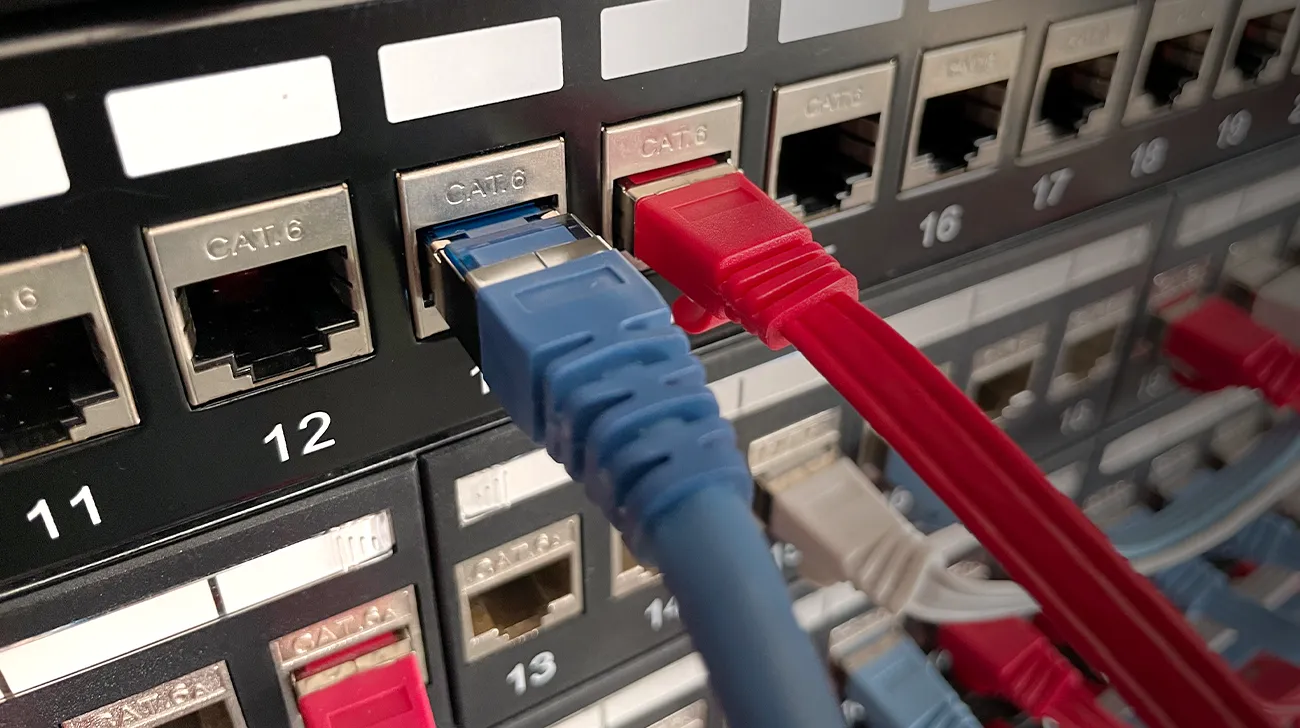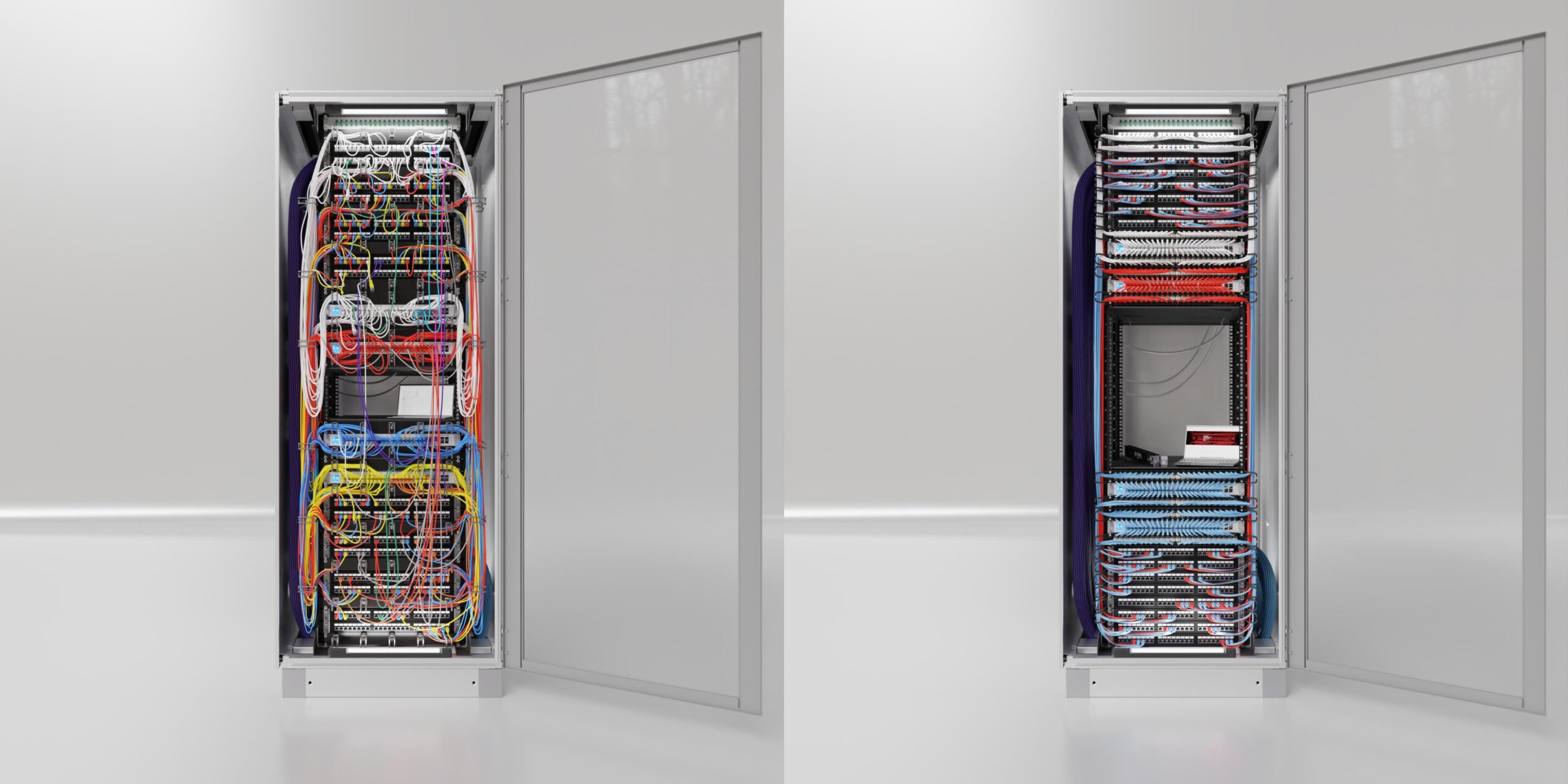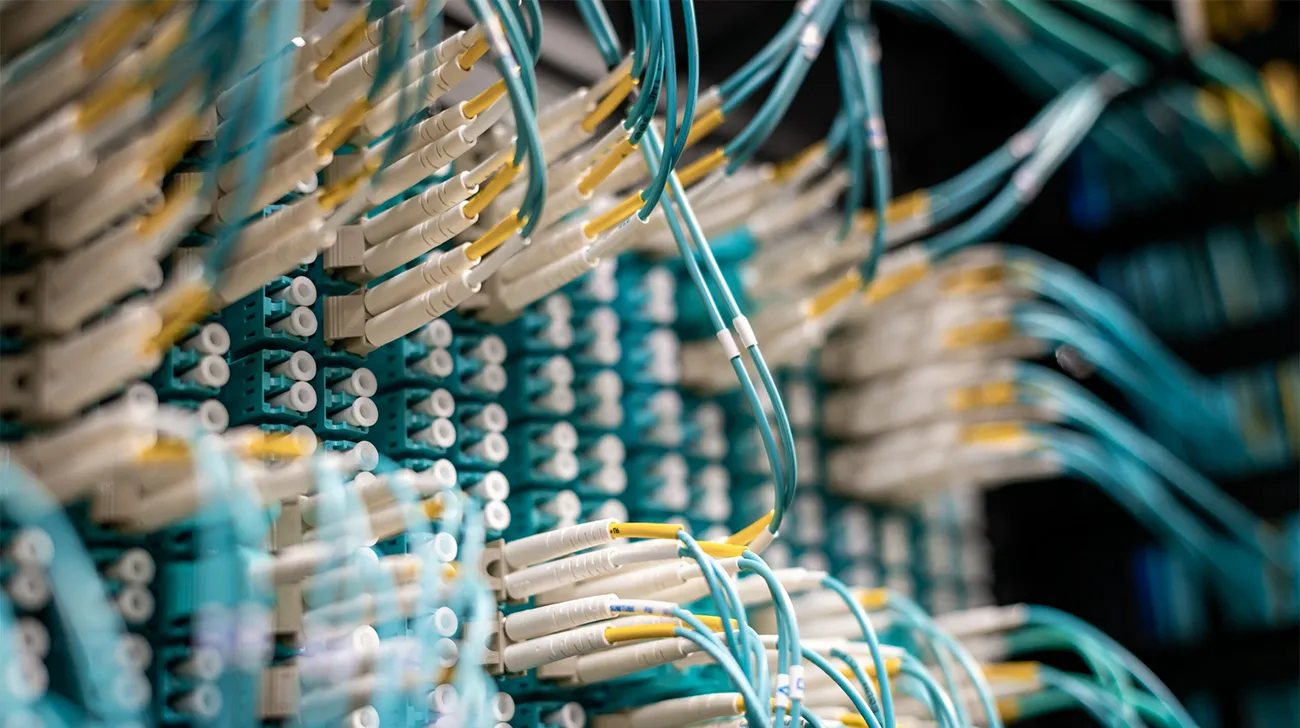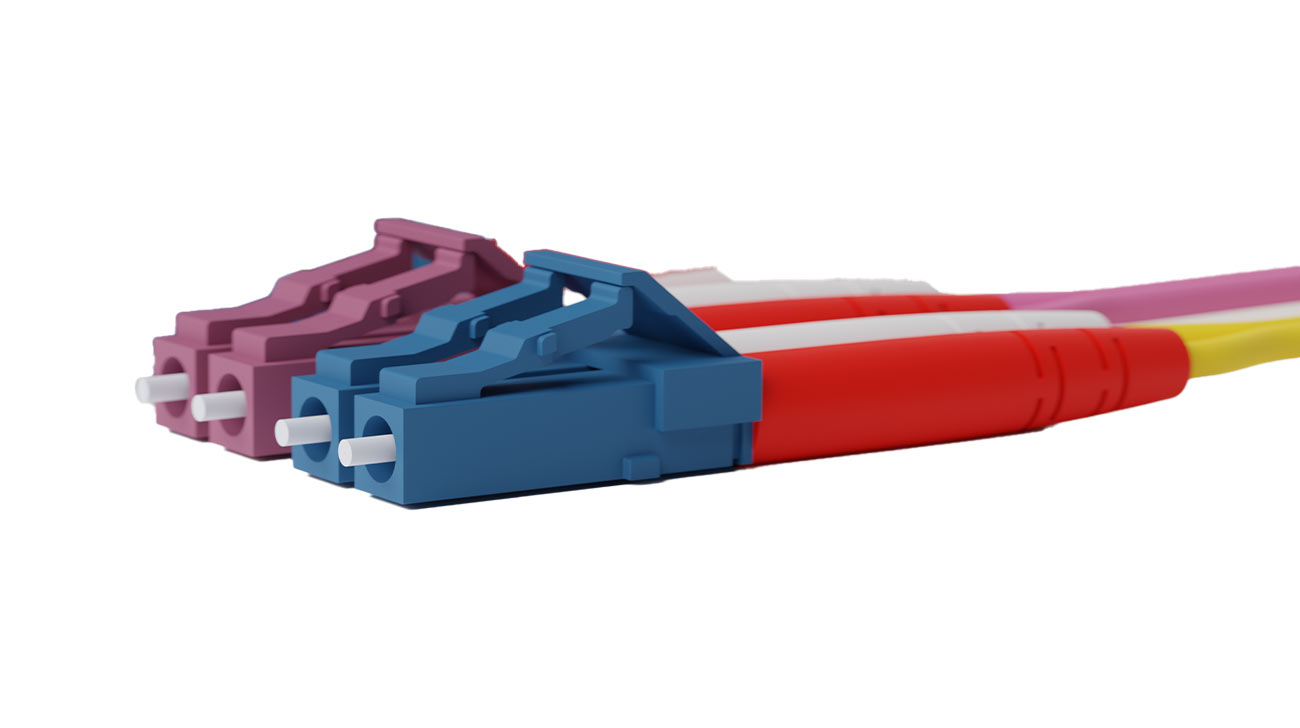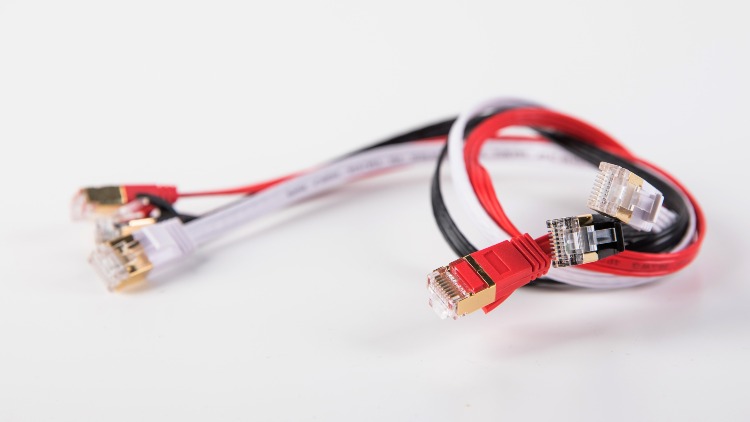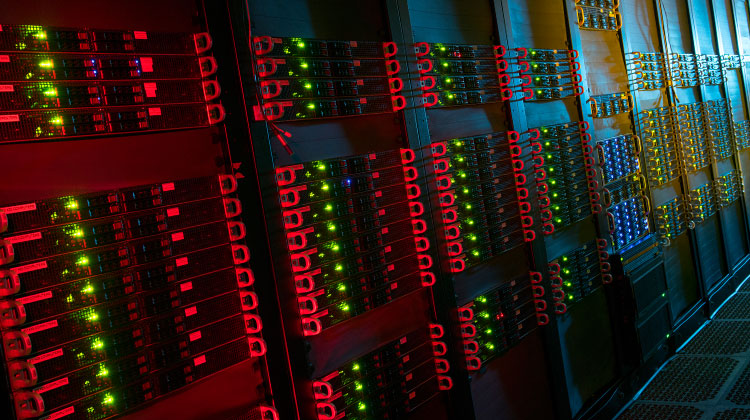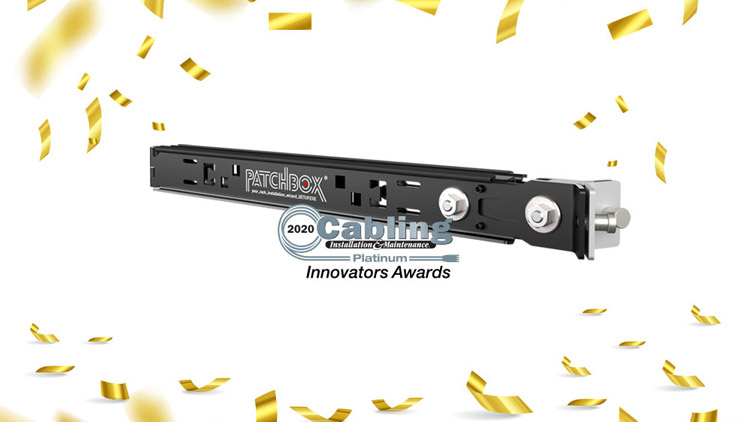Round Cables used to rule the IT world, but their flat counterpart is on the advance and meets higher standards every few years. Understanding the nuances between Round vs. Flat Ethernet Cables is paramount for professionals and enthusiasts alike.
This detailed exploration dives deep into the physical, performance, and practical differences between these two types of cables.
Physical Composition and Space Management
Traditionally, round Ethernet cables have been the cornerstone of networking, known for their twisted pairs of wires encased in a durable sheath.
This design is adept at reducing EMI and maintaining signal integrity. However, the round nature of these cables often translates into bulkier cable management solutions, especially when large bundles are necessary in data centers and complex network setups.
In contrast, flat Ethernet cables – nowadays available as Twisted Pairs – present a revolutionary approach. Their sleek, streamlined design is not just about aesthetics; it’s about efficiency and space management.
In environments where every inch counts, the less bulky nature of flat cables provides a significant advantage.
They can be easily routed along baseboards, under carpets, and behind furniture, making them an ideal solution for both office and home setups.
The space-saving benefit is particularly evident in data centers where rack space is invaluable and ideal airflow important. Here, the slim profile of flat Ethernet cables can lead to a more organized, accessible, and scalable networking infrastructure while still meeting the high industry standards.
Comparison Round vs. Flat Ethernet Cables
| Feature | Round Ethernet Cable | Flat Ethernet Cable |
|---|---|---|
| Shape | Round & bulky | Slim & flat |
| Space Efficiency | Takes up space, blocks airflow | Highly space-efficient, improved airflow |
| EMI Protection | Very Good | Good, Improved with technology |
| Flexibility | Less flexible | Highly flexible |
| Durability | Durable, but prone to breaking | More durable, especially if less tension |
| Installation | Can be cumbersome | Easier |
| Data Transfer Speed | High | High |
Performance Metrics: Speed, Crosstalk, and Signal Integrity
When it comes to performance, both round and flat Ethernet cables are designed to meet high standards, supporting categories like Cat6 and Cat6a for high-speed data transfer.
They are capable of handling data rates of up to 10 Gbps, ensuring that your network’s performance is up to the mark.
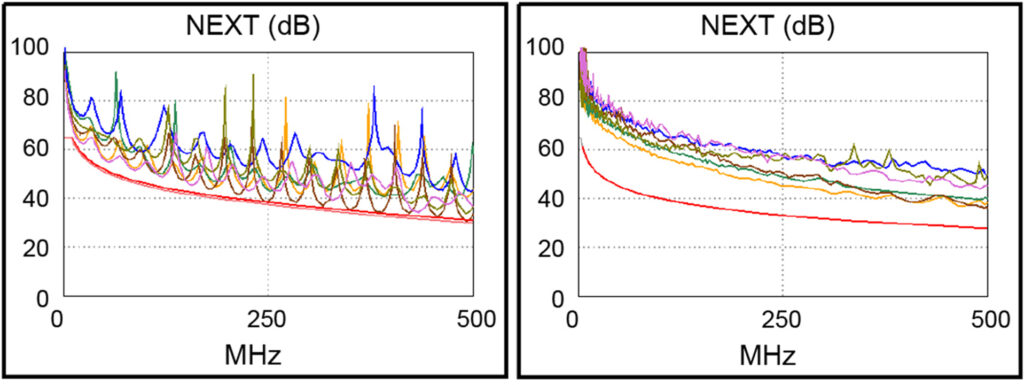
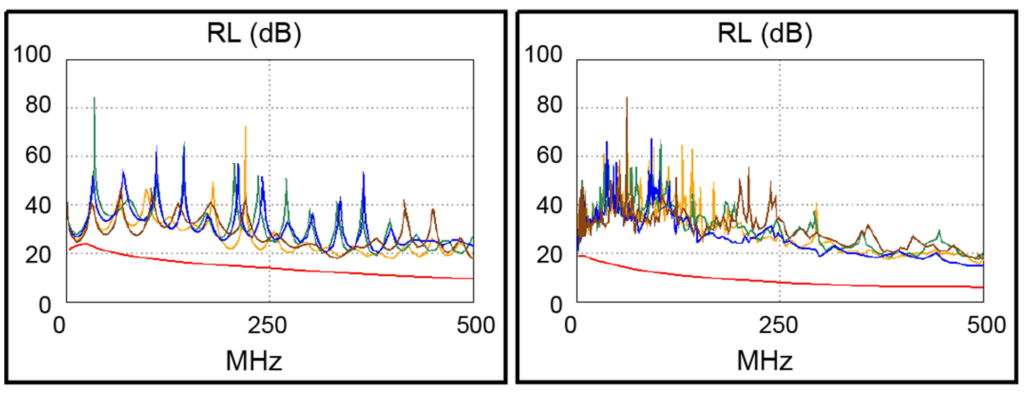
Thanks to major developments in recent years, flat cables nowadays meet the ISO/IEC 11801 Ea Class and ANSI/EIA/TIA-568 Cat 6A Channel standards. They are available as Twisted Pairs, ensuring safe data transfer without NEXT or crosstalk.
This means that not only do they keep up with the speeds offered by round cables, but they also offer a stable and interference-free connection.
Durability and Flexibility: A Closer Look
The longevity and adaptability of a cable are critical. Round Ethernet cables have long been favored for their robust construction.
The thick exterior insulation is seen as a bulwark against wear and tear, making these cables a go-to for environments where durability is a priority.
However, it’s crucial to note that advancements in materials and manufacturing have significantly bolstered the resilience of flat Ethernet cables.
Modern flat cables are designed with durable materials that withstand bending and twisting, challenging the notion that they are inherently less durable than their round counterparts.
Moreover, their flexibility is a substantial advantage. The ease with which they can be installed, especially in tight or unconventional spaces, makes them not just a practical choice but a versatile one as well.
Whether you’re setting up a complex office network or a simple home system, the pliability and ease of handling of flat Ethernet cables can make the installation process smoother and more efficient.
EMI Protection and Signal Quality: An Evolving Landscape
Electromagnetic interference (EMI) is a persistent challenge in the realm of networking, capable of degrading signal quality and data integrity.
Round Ethernet cables have traditionally offered solid protection against EMI, making them a reliable choice for maintaining signal quality.
However, this is an area where flat Ethernet cables have seen significant evolution. Modern flat cables are increasingly equipped with shielding and twists that rival the EMI protection offered by round cables.
This advancement means that the sleeker flat cables no longer have to compromise on signal quality, offering a high degree of protection against external interference.
Round vs. Flat Ethernet Cables: Cost-Effectiveness and Long-Term Viability
When evaluating Round vs. Flat Ethernet Cables, cost is a critical factor. Initially, round cables might seem like a more economical choice due to their widespread availability and traditional manufacturing processes.
However, when considering long-term viability and total cost of ownership, flat Ethernet cables begin to shine.
Their easier handling and installation can translate into lower labor costs, particularly when equipping your network rack with a PATCHBOX Cable Management System.
Its retractable flat cables reduce the duration of downtimes by up to 90%, allow you to use up to 50% more rack space, and keep your cabling forever organized.
Attenuation and Signal Quality Over Distances
Attenuation, the reduction in signal strength over distance, is a concern in any network setup. Historically, round Ethernet cables have been preferred for their minimal attenuation and reliable signal quality over long distances.
However, advancements in flat Ethernet cable technology have effectively addressed this concern.
High-quality flat cables are engineered to maintain signal integrity over comparable distances, ensuring that the data rate and speed remain consistent and reliable.
This makes them not just a viable alternative but a competitive option for installations where signal strength is paramount.
Round vs. Flat Ethernet Cables: Aesthetic and Practical Installation
The installation process can significantly impact the choice between Round vs. Flat Ethernet Cables. Round cables, with their bulkier profile, can be more challenging to manage and route, especially in tight spaces or when a clean, unobtrusive setup is desired.
Flat Ethernet cables, conversely, offer a distinct advantage in this regard. Their slim profile and flexibility make them exceptionally easy to install, even in areas where space is at a premium.
They can be discreetly run along edges, corners, and even under carpets, maintaining a low profile while delivering high performance.
For businesses and individuals who value aesthetics and practicality, flat Ethernet cables provide an elegant solution that does not compromise on functionality.
Environmental and Operational Adaptability of Round and Flat Patch Cables
The operational environment plays a significant role in choosing the right type of Ethernet cable. Round cables have been the traditional choice for varied environments, known for their robustness and ability to withstand different conditions.
However, flat Ethernet cables have rapidly closed this gap. Designed with modern materials and manufacturing techniques, they are now just as capable of operating effectively in diverse environments.
Whether it’s a temperature-controlled data center or a challenging outdoor setting, high-quality flat Ethernet cables can deliver reliable performance.
Their adaptability, coupled with their space-saving design, makes them an increasingly popular choice for a wide range of applications.
Round vs. Flat Ethernet Cables: User Experiences and Future Trends
User experiences often highlight the practical differences between Round vs. Flat Ethernet Cables. Many users (from McDonald’s, Google, Walt Disney Park & Resorts, and many others) have noted the ease of use, space savings, and improved aesthetics associated with flat cables after installation of the PATCHBOX.
These user testimonials contribute to the growing perception of flat Ethernet cables as not just an alternative but a preferred choice in many scenarios.
Looking towards the future, as technology continues to advance and spaces become more premium, the trend is likely to favor the sleek, efficient, and versatile nature of flat Ethernet cables.
Their continued evolution in terms of performance, durability, and EMI protection positions them as a future-forward solution for both personal and professional networking needs.
Electrical Quality & Conductivity of Round vs. Flat Ethernet Cables
Electrical quality and conductivity are at the heart of any discussion about Round vs. Flat Ethernet Cables.
Unlike short patch cables, both types are designed to meet stringent industry standards, ensuring reliable data transmission and network performance.
However, the flat design of some Ethernet cables can potentially reduce resistance and improve conductivity due to their wider, thinner profile, which allows for a more uniform and consistent electrical path.
This subtle difference can contribute to enhanced overall performance, particularly in systems where optimal electrical quality is crucial.
The Evolution of EMI Protection in Flat Patch Cables
As technology progresses, so does the capability of flat Ethernet cables to provide effective EMI protection.
Earlier versions may have lagged behind their round counterparts in this regard, but modern flat Twisted Pair cables are often equipped with advanced shielding techniques.
These innovations include foil shielding and improved insulating materials, which significantly reduce the impact of EMI on data integrity.
This evolution marks a critical step in positioning flat Ethernet cables as a viable, if not superior, option for environments where EMI could pose a significant challenge.
Scalability and Future-Proofing
In a rapidly evolving tech landscape, scalability and future-proofing are more important than ever. When considering Round vs. Flat Ethernet Cables, it’s essential to look at how each type fits into a long-term strategy.
Flat Ethernet cables, with their space-saving design and ease of installation, offer a level of scalability that is particularly appealing.
As networks grow and evolve, the ability to easily add or reroute cables without significant disruption or additional space requirements is invaluable.
Furthermore, as flat cables continue to improve in terms of performance and durability, they represent not just a solution for today’s needs but a forward-looking investment in tomorrow’s networking requirements.
Round vs. Flat Ethernet Cables Conclusion
Throughout this exploration of Round vs. Flat Ethernet Cables, we’ve delved into various aspects, from physical design and performance to cost-effectiveness and future trends.
While both types of cables have their place in the world of networking, the advantages of flat Ethernet cables are clear.
Their space-efficient design, ease of installation, and evolving performance capabilities make them a subtly superior choice for many applications.
Whether you’re setting up a home network or managing a complex data center, considering flat Ethernet cables is not just an alternative; it’s a decision that leans into efficiency, aesthetics, and future readiness.
